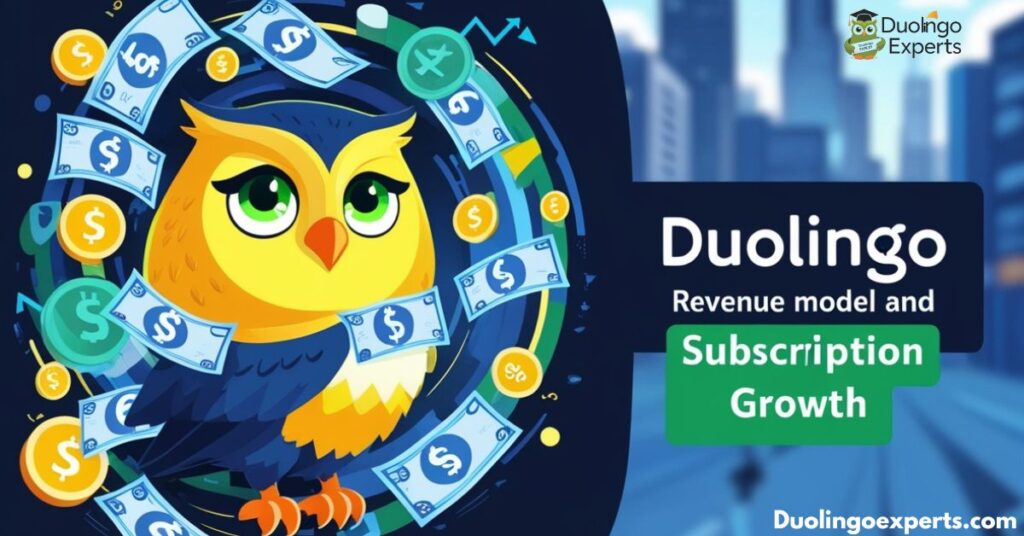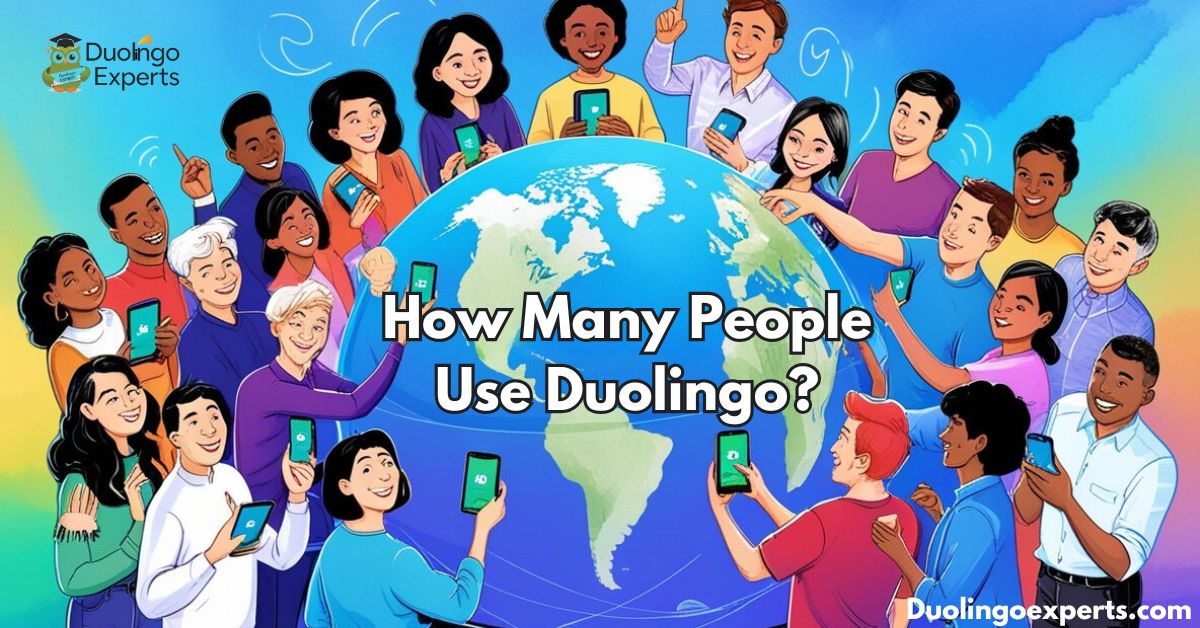Language learning has evolved dramatically over the past decade, and at the forefront of this transformation is Duolingo. A free, user-friendly app that has attracted millions of users worldwide, Duolingo has changed the way we learn languages. Its gamified approach to language education has made it one of the most widely used and downloaded language learning apps globally. But how many people use Duolingo? How does its user count reflect the broader global language learning trends? And what are the most engaging features that keep learners coming back?
This comprehensive guide explores Duolingo’s user count, global trends, and engagement statistics to provide an in-depth look at how Duolingo has grown and evolved over time. Let’s dive into the numbers and trends that make Duolingo the leader in language learning.
Understanding Duolingo Popularity and Global Reach
Duolingo’s rise to the top of the language learning world has been remarkable. The app boasts millions of users across the globe, with a diverse user base spanning different age groups, languages, and motivations. Let’s break down the key factors contributing to its success.
Duolingo’s Growth and Global User Count
Duolingo is currently one of the most popular language learning apps worldwide. As of Q2 2023, the app had achieved remarkable milestones:
- 500 million registered users
- 74.1 million monthly active users (MAU)
- 21.4 million daily active users (DAU)
These numbers demonstrate Duolingo’s dominance in the field, with millions of people relying on it as their primary tool for language learning.
But how did Duolingo reach such impressive figures?
Key Drivers of Duolingo’s Success
Duolingo’s growth is driven by several factors:
- Accessibility: The app is free to use, offering a range of features without requiring a subscription. This makes it accessible to anyone with a smartphone or internet connection, regardless of their financial situation.
- Gamification: Duolingo’s playful, game-like interface keeps learners engaged and motivated. Users can earn points, maintain streaks, and challenge themselves with increasingly difficult levels.
- Personalized Learning: The app adapts to each user’s skill level, ensuring that lessons are neither too easy nor too difficult. This tailored approach increases user satisfaction and retention.
- Cross-Platform Availability: Duolingo is available on both mobile devices and the web, which allows learners to continue their progress on multiple platforms.
- Expanding Language Options: Duolingo offers courses in over 40 languages, from widely spoken languages like Spanish and French to less commonly taught languages such as Hawaiian and Navajo.
These features, along with continuous improvements, have helped Duolingo stand out in the crowded space of language learning apps.
Duolingo User Segmentation

Duolingo’s diverse user base reflects the universal appeal of language learning. The app caters to people of all ages, backgrounds, and motivations. Let’s take a closer look at the segmentation of Duolingo’s users.
Total User Base: Who Uses Duolingo?
As of 2023, Duolingo has over 500 million registered users, with a growing percentage of those being active users. The app is particularly popular in the United States, India, and Brazil, where large portions of the population are either learning English or other foreign languages.
Age Distribution of Duolingo Users
Duolingo appeals to a broad demographic, but certain age groups dominate the platform:
- 18-24 years: This age group is particularly active on Duolingo, likely due to the app’s engaging interface and accessibility. Many users in this group are seeking to improve their language skills for academic purposes, travel, or personal growth.
- 25-34 years: Users in this group often prioritize career advancement, learning new languages to improve job prospects or to meet professional requirements.
Both of these groups are drawn to Duolingo’s gamified learning experience, which allows them to integrate language learning into their busy lifestyles without the pressure of traditional education methods.
Gender Breakdown
Duolingo’s gender distribution is relatively balanced:
- 51% female users
- 49% male users
This gender balance indicates that Duolingo’s appeal crosses gender lines, suggesting that language learning is a universally relevant activity for both men and women.
Geographic Reach: Where Are Duolingo Users Located?
Duolingo’s app is available in 194 countries, but the highest per capita usage occurs in the Nordic countries. The app is especially popular in Iceland, Norway, Sweden, Denmark, and Finland, where language learning is a key part of the culture.
Duolingo also sees significant usage in countries like:
- United States: A major user base, particularly for English language learners.
- Brazil and India: Two countries where Duolingo has grown rapidly, driven by the need for English language proficiency and an increasing desire to learn new languages.
Monthly and Daily Active Users: Key Engagement Metrics
One of the best indicators of a platform’s success is its active user base. Let’s explore Duolingo’s monthly active users (MAU) and daily active users (DAU) to understand the platform’s engagement.
Monthly Active Users (MAU)
As of Q2 2023, Duolingo had 74.1 million monthly active users. This impressive number shows that millions of people engage with the app on a regular basis. The number of MAUs is a testament to Duolingo’s ability to maintain its relevance in an ever-changing market.
Daily Active Users (DAU)
Duolingo also boasts 21.4 million daily active users. This shows a strong level of user retention, as learners are using the app regularly to practice and improve their language skills. This habit-forming feature is crucial in making Duolingo a part of users’ daily routines.
Streak Feature and User Engagement
One of the standout features of Duolingo is the streak feature, which rewards users for consecutive days of learning. Users who maintain a streak for 365+ days can join an elite group, with 8 million users having reached this milestone. The streak feature has proven to be an incredibly effective retention tool, encouraging users to return every day and keep learning.
Duolingo Revenue Model and Subscription Growth

While Duolingo offers a free version of its app, it also has a premium subscription model, known as Duolingo Plus. This model helps monetize the platform while offering additional benefits to paying users.
Duolingo Plus Features
The Duolingo Plus subscription includes the following benefits:
- Ad-free experience: Users can learn without interruptions from advertisements.
- Offline access: Lessons can be downloaded for offline use, ensuring that users can continue learning even when they don’t have an internet connection.
- Personalized learning: Duolingo Plus users have access to more advanced learning features, such as detailed progress reports.
Subscription Revenue and Growth
Duolingo’s subscription revenue has seen impressive growth. In Q2 2023, the app generated $137.5 million in revenue from paid subscribers. This represents a 59% increase from the previous year, indicating that Duolingo’s paid service continues to gain traction among users.
- Paid subscribers: 5.2 million (Q2 2023)
The increase in revenue and paid subscribers shows that Duolingo’s business model is working and that users are willing to pay for a premium, enhanced learning experience.
Most Popular Languages on Duolingo
One of the key features of Duolingo is its wide range of languages. The platform offers courses in over 40 languages, from widely spoken languages to less commonly taught languages. Here’s a breakdown of the most popular languages on Duolingo:
Top 5 Most Popular Languages on Duolingo
- English: As expected, English is the most popular language, especially for users in non-English speaking countries. Duolingo’s English courses are widely used by learners in countries such as India, Brazil, and China.
- Spanish: Spanish is another highly sought-after language, with learners aiming to connect with the large Spanish-speaking population worldwide.
- French: French is popular among learners in Europe, Africa, and North America, with a strong cultural influence.
- German: Widely spoken in Europe, German is also a popular choice for students and professionals in the business world.
- Japanese: Japan’s cultural influence, especially in entertainment and technology, has led to a growing interest in learning Japanese.
Emerging Languages on Duolingo
Duolingo has expanded its offerings to include emerging languages, which are languages with growing popularity but not yet widely spoken.
- Korean: The rise of Korean culture, driven by K-pop and K-dramas, has led to a surge in interest in learning Korean.
- Portuguese: With a significant number of speakers in Brazil, Portugal, and parts of Africa, Portuguese is gaining traction among Duolingo users.
Duolingo has also introduced less commonly taught languages like Hawaiian and Navajo, making it one of the few platforms offering these unique courses.
Duolingo Role in Global Language Learning Trends

Duolingo’s impact on global language learning goes beyond just its user numbers. The app has influenced key trends in the education space, shaping how people learn languages around the world.
Gamification in Education
One of Duolingo’s most important contributions to educational technology is its use of gamification in education. By turning learning into a fun, interactive game, Duolingo has made language learning accessible to a broader audience. This gamified approach encourages users to set learning goals, earn rewards, and compete with friends, making it more engaging than traditional learning methods.
Personalized Learning
Duolingo’s ability to adapt to each learner’s needs is a prime example of personalized learning. The app adjusts the difficulty of lessons based on the user’s progress, ensuring that learners are consistently challenged without feeling overwhelmed.
Language Learning Motivations
The motivations behind why people use Duolingo vary. While some learners aim to advance their careers or travel, others are driven by the desire to connect with their heritage or simply engage in a fun hobby. These diverse motivations help explain Duolingo’s global appeal.
Frequently Asked Questions
How many Duolingo users are there?
Duolingo has over 500 million registered users worldwide. The platform boasts 74.1 million monthly active users (MAU) and 21.4 million daily active users (DAU) as of Q2 2023.
How many people use Duolingo in 2025?
As of 2025, Duolingo is expected to have over 600 million registered users globally. The platform’s monthly active users (MAU) and daily active users (DAU) continue to grow steadily.
How many people use Duolingo daily?
As of Q2 2023, 21.4 million people use Duolingo daily. The app’s daily active user (DAU) count continues to rise as more learners engage with its gamified platform.
How many people use Duolingo in Australia?
Specific data on Duolingo users in Australia is not readily available. However, Duolingo is widely used across Australia, with the app being popular for language learning among users in the region.
How many people use Duolingo for Spanish?
Duolingo’s Spanish course is one of its most popular offerings, with millions of users worldwide. While exact numbers are not available, Spanish consistently ranks among the top languages learned on the platform.
How many active users on Duolingo?
As of Q2 2023, Duolingo has 74.1 million monthly active users (MAU). The platform also sees 21.4 million daily active users (DAU), reflecting its strong user engagement.
What is the top 1% on Duolingo?
The top 1% on Duolingo refers to users who have achieved significant milestones, such as completing hundreds of lessons or maintaining long streaks. These learners are highly engaged and often contribute to Duolingo’s community through challenges and achievements.
How many people actually learn from Duolingo?
Duolingo has over 500 million registered users, with a significant portion actively learning languages. While exact numbers of active learners are not available, millions engage daily through lessons and exercises.
How many people complete Duolingo?
Duolingo does not have specific data on how many people fully complete their courses. However, the platform reports millions of users who complete lessons and maintain long streaks, indicating strong user engagement.
How many people have a 365 day streak on Duolingo?
Over 8 million users on Duolingo have achieved a 365-day streak. This milestone highlights the platform’s ability to engage learners consistently over long periods.
Conclusion
Duolingo has become a global leader in language learning, with over 500 million registered users. The app’s gamified learning approach and personalized lessons make it an engaging platform for language learners worldwide. With monthly active users (MAU) and daily active users (DAU) on the rise, Duolingo continues to revolutionize digital education.
Its expansion into emerging languages and focus on user engagement signals a bright future for language learners. Whether for career, travel, or personal growth, Duolingo offers accessible and effective learning solutions. The app’s success is a testament to the evolving landscape of language education globally.
>>>Read Also: How to Say Closed in Spanish on Duolingo: Easy Guide to Learn Fast

DuolingoExperts, managed by MarkJohan, offers expert insights and tips for mastering languages. A tech-driven platform to enhance your learning experience.

